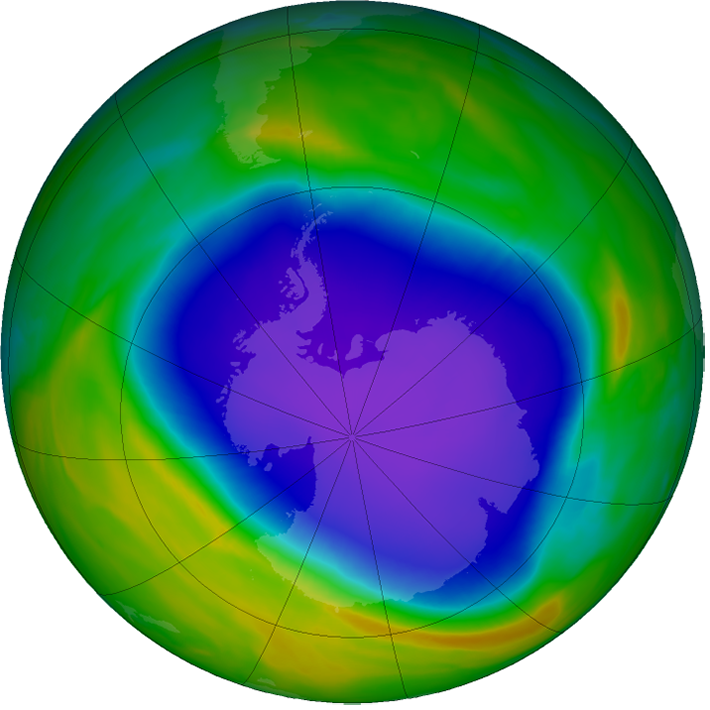Research Page
Ozone Basics
Ozone is a gas made up of three oxygen atoms (O3). It occurs naturally in small amounts in the atmosphere. The ozone layer is a layer in Earth's atmosphere that absorbs most of the Sun's ultraviolet (UV) radiation, protecting life on Earth. The ozone hole is a loss of stratospheric ozone over Antarctica. It has been proven to be a result of human activities - the release of huge quantities of chlorofluorocarbons (CFCs) and other ozone depleting substances into the atmosphere. Though 90% of atmospheric ozone in the atmosphere sits in the stratosphere, ozone plays an important role in the troposphere, the layer of atmosphere where weather occurs. It is a climate gas in the upper troposphere and the primary source of the hydroxyl radical (OH), the atmosphere's “detergent,” which removes many pollutants that affect atmospheric composition and climate.
Instruments onboard NASA satellites, such as Aura's Ozone Monitoring Instrument (OMI) and Microwave Limb Sounder (MLS), monitor the health of the Earth's ozone layer and provide insight into the complex chemistry and dynamics that influence it. OMI also observes several important tropospheric trace gases, such as nitrogen dioxide, that determine the chemical production of tropospheric ozone.
Instruments onboard NASA satellites, such as Aura's Ozone Monitoring Instrument (OMI) and Microwave Limb Sounder (MLS), monitor the health of the Earth's ozone layer and provide insight into the complex chemistry and dynamics that influence it. OMI also observes several important tropospheric trace gases, such as nitrogen dioxide, that determine the chemical production of tropospheric ozone.

